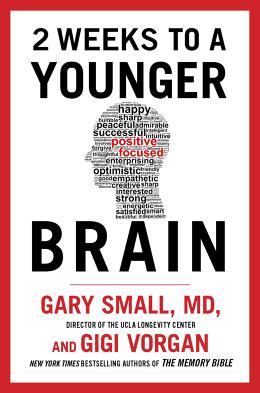3 easy Steps to raise Your memory
data overload is killing your memory. right here’s how to make it higher.
July 13, 2015
If we ever meet after which we meet a 2nd time, and that i greet you by using pronouncing, “hello man,” it’s no longer because I’m an ultra casual more or less man, this is because I’ve forgotten your identify.
but please, don’t feel unhealthy. It’s now not because you’re boring or unimportant or boring. It’s not as a result of you at all. It’s me. Or extra particularly, it’s this thing i have (this factor we all have, in fact), referred to as continuous partial attention (CPA). The time period was once first coined in the late Nineties to explain how we began to handle the rising inflow of “endless” data. back within the 1990s, this used to be mainly our cellular phone and the internet (whenever we have been at our desk, that is). We began giving a variety of information all just a little bit of consideration. We were adapting—and it used to be manageable.
leap forward almost two decades and our desk-sure internet has develop into our in all places internet, and our cellphones have transform smartphones with extra pings and notifications than we ever thought that you can think of. mix that with social media, our laptops, our good watches, and our CPA is in overdrive. Our brains can’t keep up with the entire stimulation, so it starts offevolved to push things we will have to keep in mind that—easy issues like names—out of our minds to make room for an extraordinarily large overview of our social media mentions and push notifications. the great irony of our twenty first-century tech utopia will be that, though my iPhone 6 can job my memory to call Bob when I go away my geofenced place of work, i will’t in truth take into account that who Bob is.
“We’re constantly scanning the environment for the following buzz, or bing, or whatever it usually is that is more attention-grabbing, more thrilling,” says Dr. Gary Small, director of the UCLA longevity center on the Semel Institute for Neuroscience and Human conduct. “i feel that does put our brains in a state of persistent sub-acute stress, which is not good for us.”

That chronic sub-acute stress manifests itself in a lot of ways. high blood pressure, anxiousness, and, for me, sometimes the inability to keep in mind that stupid easy issues. not wanting to have the memory recall of a centenarian when I’m only in my 30s, I spoke with Dr. Small, who is also the writer of 2 Weeks To A youthful mind, to seek out out simple memory boosting workout routines i will be able to do to reverse this reminiscence decline, and get back to having the reminiscence of, smartly, a person of my age.
listed below are three easy steps Dr. Small recommends for any individual who desires to make stronger their reminiscence.
1. Meditate (for only a few minutes)
When Dr. Small mentions meditation as a reminiscence exercise, my first thought is: “I don’t have half-hour to mild candles and incense and to find my inner animal spirit information.” however fortunately Dr. Small is extra patient than i’m, and he explains that whereas long deep meditative classes do have important thoughts and physique advantages—i don’t need to go all Buddhist monk to toughen my reminiscence.
“that you could take 10 minutes, 5 minutes, 2 minutes—no matter you do it has a huge impact,” says Dr. Small. What matters is that you simply just take some brief time to let go of the noise and center of attention on yourself.
So if in case you have a huge assembly arising where forgetting a new shopper’s name might potentially price you the deal, Dr. Small suggests quickly previously you sit down quietly in a chair and close your eyes. Take a deep breath, let it out, and continue to breathe deeply and slowly. whereas doing this, focal point your attention on nothing but teams of your muscle groups. begin along with your brow after which relax these muscles. Go on to your shoulder muscular tissues, then your abdomen, legs, toes, toes. This systemic rest will deliver on a more or less meditative state in a subject of minutes.
“Our minds are continuously chattering,” says Dr. Small. “What this train is doing is training your neurocircuits to focus consideration, to calm down, to let go; you’re instructing your thoughts to let go of the psychological chatter. That way you’ve got higher mental focus and a spotlight.”
And once you are in this state of attentiveness, your thoughts is free to center of attention on your next step.
2. center of attention and frame
Dr. Small’s mini-meditations assist top the physique to focus—the quantity-one part of a strong memory. “the largest cause individuals do not understand that is they are no longer paying attention,” says Dr. Small.
Admittedly, that’s no longer fully their fault as today’s world of data overload makes it hard to be aware of anyone thing. That’s why Dr. Small likes to teach purchasers a formidable reminiscence exercise he calls center of attention and body.

“center of attention is a reminder to pay attention,” says Dr. Small, and in the event you’ve completed a mini-meditation you brain should be in a way of thinking to center of attention. “body encompasses different ways to offer the information which means—frame it round one thing meaningful. If something is meaningful it is going to be memorable.”
So simply how does focal point and frame let you make that new consumer within the assembly meaningful so that you’ll understand that her name the subsequent time you see every different? the secret’s visualization.
“one of the crucial fashionable reminiscence complaints is names and faces,” says Dr. Small. “[With Focus and Frame] you focus your consideration, create a visible image for the face, create a visual picture for the title, and link them together.”
for example, if that new client introduces herself as Lisa and if she has a nice smile chances are you’ll call to mind the painting, Mona Lisa, and the smile of Mona Lisa. Or in the event you meet Mr. Bender, you may visualize him inebriated on a bender. if you happen to’re targeted while you create this visible linkage your brain will needless to say it the subsequent time you see the individual.
it is going to sound comical—even simple, but this method works wonders for reminiscence, says Dr. Small. “Use no matter first association involves mind. These are in reality basic ways, and memory masters use them to memorize mountains of data. they’re somewhat easy, and straightforward, and fun.”
three. potential evaluation Time
after all, remembering names of individuals aren’t the one memory problems now we have—simply ask any person who’s forgotten to take an important file with them to the place of job for the day’s meeting.
“an incredible downside people have is with what we call prospective reminiscence,” says Dr. Small. prospective reminiscence is the power to keep in mind that you just want to do one thing at some point. “you permit the home and also you omit your phone or the file you need for a gathering.”
whereas an exercise like focal point and frame will do little just right right here—in spite of everything, chances are you can keep in mind that what your file seems like, but remembering what it seems like gained’t will let you if you happen to’ve already left the home without it—another one-minute exercise Dr. Small recommends can lend a hand overcome prospective reminiscence loss.
“This has to do with educating memory habits,” says Dr. Small. “we all tend to try this to some extent—we now have reminiscence locations that remind us to do things. for example, subsequent to the dinette desk, i have my nutrition in the drawer, and that jogs my memory to take my nutrients in the morning.”
however while memory places in the past can have served as useful reminders—for instance, a person may go away their planner on the desk through the front door to keep in mind that to seem over what they have got lined up for the day, and what they might want to bring for it—now that so much of our world is digital, residing at the back of our smartphone’s glass monitors, many people don’t have the way to have the physical ready-through-the-door reminder anymore.
To counteract the lack of memory places, Dr. Small recommends coming into the dependancy of changing them with potential evaluate times.
“on the similar time of day each day within the morning, sooner than they go away the home, people will have to test their telephone’s calendar and systematically go through all their appointments and assume through what they’ll want for that day,” says Dr. Small. Doing this repeatedly, he says, will imprint a psychological command within the person’s brain, so that they’ll robotically operate prospective opinions each time prior to they go away the home. These evaluations will set off memories of duties they need to function for upcoming future events.
changing into second nature
while the three workouts above would possibly appear to be loads to do day by day, Dr. Small says that whenever you begin practicing them, they may be able to all be complete in no more than four or 5 minutes a day.
“some of these types of tactics seem moderately tricky and complicated to start with, but if folks begin easy and they increase the skills, it gets very straightforward and turns into second nature,” says Dr. Small. “and also you research shortcuts. With focus and frame, as an instance, it’s like finding out a language. you’ve got a complete menu of pictures that you simply conjure up to help you with completely different names and phrases.”
As for when you can predict to peer results? quite a bit faster than you suppose.
“When instructing [these practices] to folks in a lecture room, you see important results in a brief period of time,” says Dr. Small. “Even with people teaching themselves, we found that inside two weeks, folks might give a boost to their reminiscence performance and even alter their neurocircuitry as measured on mind scans.”
quick company , learn Full Story
(51)














